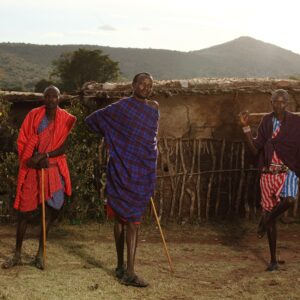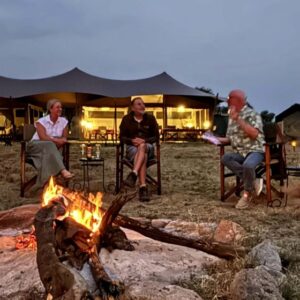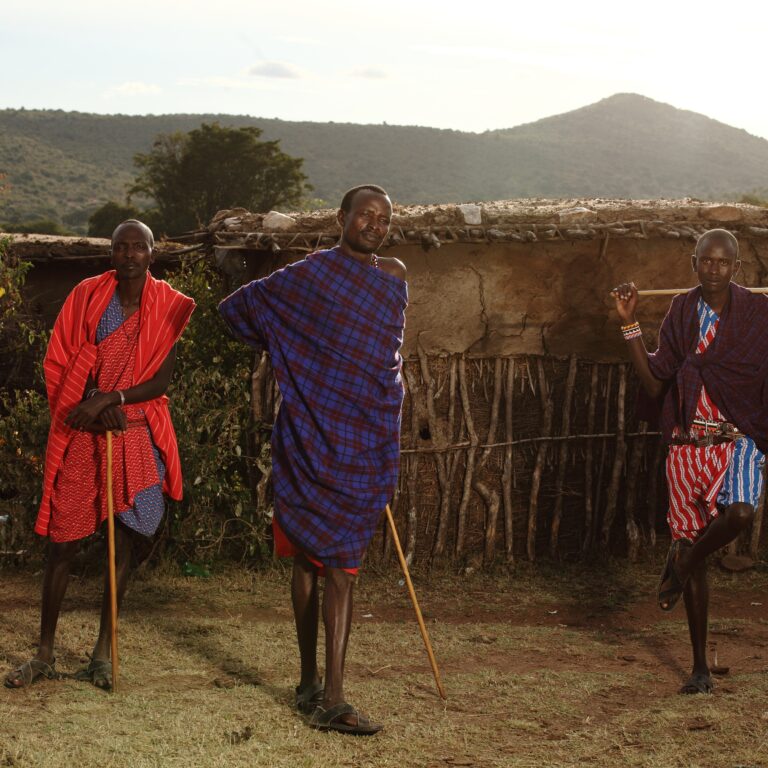For many intrepid adventurers, the allure of Africa culminates in the majestic snow-capped peak of Mount Kilimanjaro. Standing as the continent’s highest point, its summit beckons with promises of breathtaking vistas and an unparalleled sense of accomplishment. Yet, the journey to “Kili’s” roof is not merely a test of physical endurance; it’s a profound challenge to the human body’s ability to adapt to dwindling oxygen levels. This is where Mount Meru, Kilimanjaro’s quieter, equally stunning neighbor, emerges not just as a rewarding trek in its own right, but as an incredibly strategic stepping stone. The question isn’t if climbing Mount Meru will help you acclimatize for Kilimanjaro. But rather how profoundly it can enhance your chances of success and enjoyment.
Altitude Adaptation: Training Your Body to Thrive in Thin Air
The core challenge of high-altitude mountaineering is the reduced atmospheric pressure. Meaning less oxygen is available with each breath. This is the essence of what necessitates acclimatization. When you ascend too quickly. Your body struggles to cope, leading to a range of unpleasant and potentially dangerous symptoms known as Acute Mountain Sickness (AMS).
Mount Meru, with its summit reaching 4,565 meters (14,977 feet), provides an ideal “dress rehearsal” for Kilimanjaro. While not as high as Kili’s 5,895 meters (19,341 feet). Meru’s altitude is substantial enough to trigger the vital physiological changes necessary for acclimatization. As you ascend Meru, your body begins to produce more red blood cells. Which are responsible for carrying oxygen. Your breathing rate and heart rate increase, and your kidneys start to excrete more bicarbonate to rebalance your blood’s pH. Essentially, climbing Meru teaches your body to operate more efficiently with less oxygen. Making the subsequent climb on Kilimanjaro a less drastic shock to your system. It’s like taking your car for a test drive on a challenging track before the big race – you identify and address potential issues before they become critical.
2. Gradual Ascent: The Golden Rule of High-Altitude Climbing
The mantra of high-altitude mountaineering is “climb high, sleep low.” This principle is fundamental to safe and effective acclimatization. Mount Meru’s typical four-day itinerary perfectly embodies this. Trekkers ascend gradually each day, gaining altitude. But often return to slightly lower elevations to sleep. This allows the body to adapt to the higher altitude during the day while recovering more effectively in a slightly more oxygen-rich environment at night.
For instance, on Meru, you might trek to Miriakamba Hut (2,514m/8,248ft) on the first day. Then continue to Saddle Hut (3,570m/11,712ft) on the second day, and make your summit push in the early hours of the third day. Returning to Saddle Hut or even Miriakamba for the night. This structured, progressive ascent mirrors the best practices for Kilimanjaro. Where routes are designed to incorporate similar “climb high, sleep low” principles. By undertaking Meru first, you not only physically acclimate but also mentally prepare for the rhythm and demands of a multi-day high-altitude trek. You learn to recognize and respond to your body’s signals in a controlled environment. Building confidence for the even greater challenge ahead.
3. Similar Terrain and Trekking Experience: Beyond the Physical
While Meru is a dormant volcano and Kilimanjaro is a strato-volcano, the trekking experience and terrain share significant similarities. Both mountains feature well-maintained trails, but they also present sections of steep ascents, rocky paths, and varied landscapes, from lush montane forests to heath and moorland, and eventually alpine desert and scree.
Climbing Meru allows you to test your gear – your boots, backpack, clothing layers, and trekking poles – in conditions analogous to Kilimanjaro. You’ll gain practical experience in packing efficiently. Managing your hydration and nutrition on the trail and navigating the day-to-day routines of a guided trek. You’ll also become accustomed to the pace of high-altitude walking, often referred to as “pole pole” (slowly slowly in Swahili). Which is crucial for conserving energy and promoting acclimatization. This practical experience is invaluable. It’s one thing to read about scree slopes; it’s another to actually hike one with tired legs. Meru provides that essential hands-on learning, making your Kilimanjaro experience feel more familiar and less daunting.
4. Reduced Risk of Altitude Sickness: Prioritizing Safety and Enjoyment
Perhaps the most compelling reason to climb Mount Meru before Kilimanjaro is the significant reduction in the risk of severe altitude sickness. Acute Mountain Sickness (AMS) can range from mild headaches and nausea to life-threatening conditions like High Altitude Pulmonary Edema (HAPE) or High Altitude Cerebral Edema (HACE). While a direct acclimatization benefit doesn’t guarantee immunity, it dramatically lowers your susceptibility.
By pre-acclimatizing on Meru, your body has already made considerable adjustments to the lower oxygen levels. This means that when you begin your Kilimanjaro ascent, you’re starting from a more adaptive physiological baseline. The chances of experiencing debilitating symptoms on Kilimanjaro, which could force a descent or even evacuation, are significantly diminished. This translates directly into a safer, more enjoyable, and ultimately more successful climb. You’ll be less likely to suffer from persistent headaches, extreme fatigue, or digestive issues, allowing you to appreciate the incredible scenery and the journey itself.
5. Preparation for Kilimanjaro’s Challenges: Mental Fortitude and Logistics
Beyond the physical benefits, climbing Mount Meru offers invaluable mental and logistical preparation for Kilimanjaro. A multi-day trek at altitude requires significant mental fortitude – the ability to push through discomfort, maintain a positive attitude, and trust your guides. Meru provides a realistic test of this resilience in a slightly less demanding environment than Kilimanjaro’s summit night.
You’ll also become familiar with the practicalities of a Tanzanian trekking expedition: the daily routine of waking early, packing up camp (or huts), eating meals prepared by the crew, and interacting with your support team of guides and porters. This familiarity can greatly reduce any pre-climb anxiety you might have about Kilimanjaro, allowing you to focus on the trek itself rather than the unfamiliar logistics. You’ll learn to manage your personal hygiene in a high-altitude setting, understand the importance of hydration and nutrition, and appreciate the rhythm of a supported climb. This dress rehearsal for Kilimanjaro’s unique demands is often underestimated but profoundly beneficial.
6. Increased Summit Success: Maximizing Your Investment
Ultimately, the goal of climbing Kilimanjaro is to reach Uhuru Peak, the “Freedom Peak.” The investment in terms of time, money, and physical preparation is substantial. Anything that can genuinely increase your chances of summit success is worth considering, and pre-acclimatizing on Mount Meru is one of the most effective strategies.
Statistics from reputable tour operators often indicate a higher summit success rate for climbers who have previously undertaken an acclimatization climb. While individual fitness and other factors play a role, the physiological advantage gained from Meru is undeniable. You arrive at Kilimanjaro not just physically stronger, but also mentally more resilient, having already conquered a significant high-altitude peak. This psychological boost, combined with a body better prepared for the demands of extreme altitude, creates a powerful synergy that significantly tips the odds in your favor for reaching Kilimanjaro’s iconic summit and basking in the panoramic glory of the African sky.
7. Enjoying the Scenery: A Calmer Introduction to Tanzania’s Highlands
While the focus on Meru might be acclimatization, it’s crucial not to overlook the sheer beauty and unique experience it offers. Nestled within Arusha National Park, Mount Meru is a wildlife haven. Trekkers are often accompanied by armed rangers to protect against encounters with buffalo, giraffes, zebras, and various antelopes. The ascent provides stunning views of the surrounding plains, the park’s diverse ecosystems, and even distant glimpses of Kilimanjaro itself.
This initial trek on Meru serves as a more relaxed and perhaps less intense introduction to the Tanzanian highlands compared to jumping directly onto Kilimanjaro. It allows you to appreciate the natural splendor without the immediate, intense pressure of the “Roof of Africa” looming over you. This calmer, more wildlife-rich experience can enhance your overall enjoyment of the African adventure, setting a positive tone before embarking on the more challenging ascent of Kilimanjaro.
Important Considerations:
Back-to-back Ascents: To maximize the acclimatization benefits, it’s recommended to climb Meru immediately before Kilimanjaro, ideally with a short turnaround time between summits.
Proper Acclimatization Schedule: While Meru can help, it’s still crucial to follow a good acclimatization schedule on Kilimanjaro itself, with gradual increases in altitude and sufficient rest days.
Individual Variation: Acclimatization varies from person to person. Some may need more time than others to adjust to high altitude.
Consult with Professionals: It’s always a good idea to consult with your tour operator and a medical professional before your trip to discuss acclimatization strategies and any potential risks.
A Complete Guide to Mount Meru Travel: Everything You Need to Know
Mount Meru, Tanzania’s second-highest peak, offers a challenging yet rewarding trekking experience within Arusha National Park. The 3-4 day trek, reaching 4,566 meters, is moderately difficult, requiring good physical fitness and acclimatization. Essential elements for a successful climb include hiring experienced guides, obtaining necessary permits, and packing appropriate gear. Mount Meru is a spectacular destination in its own right, offering a rewarding trek and unique wildlife viewing within Arusha National Park.
- Location: Situated within Arusha National Park, near the city of Arusha, Tanzania.
- Height: 4,562 meters (14,968 ft).
Duration: Typically 3 to 4 days for the ascent and descent. - Difficulty: Moderate to challenging. It’s a steep climb, especially on summit day, but non-technical.
- Permits & Guides: All treks require park permits, a licensed guide, and an armed ranger (due to wildlife in the lower sections). Porters are also part of the support team.
- Wildlife: The lower slopes of Meru are home to giraffes, zebras, buffalo, colobus monkeys, and various bird species, offering unique walking safari opportunities.
- Accommodation: Trekkers stay in basic but comfortable mountain huts (Miriakamba Hut and Saddle Hut).
Your Complete Mt Meru Packing List
A comprehensive packing list for climbing Mount Meru should include sturdy hiking boots, warm layers (including waterproof and windproof outer layers), a good quality sleeping bag, and a daypack for essentials. Don’t forget sun protection, trekking poles, and a headlamp with extra batteries. Carrying equipment like a duffel bag for porters, a backpack for personal items, and dry bags to protect gear is also crucial. Packing for Meru is similar to Kilimanjaro, focusing on layers and essential gear:
Clothing:
- Base Layers: Moisture-wicking long-sleeve shirts and bottoms (2-3 pairs).
- Mid-Layers: Fleece jacket, lightweight down jacket or synthetic insulated jacket.
- Outer Shell: Waterproof and windproof jacket and pants.
- Trekking Pants: 2-3 pairs (quick-drying).
- Shorts/T-shirts: For lower altitudes.
- Socks: Wool or synthetic hiking socks (3-4 pairs), liner socks.
- Gloves: Warm, waterproof gloves or mittens, plus thin liner gloves.
- Hat: Warm beanie/fleece hat, wide-brimmed sun hat.
Footwear:
- Hiking Boots: Well-broken-in, waterproof, ankle-supporting hiking boots.
- Camp Shoes/Sandals: For comfort in the huts.
- Gaiters: Optional, for dusty or muddy sections.
Gear:
- Backpack: Daypack (25-35L) for daily essentials, and a larger duffel bag (80-100L) for porters (soft-sided is best).
- Sleeping Bag: Rated for at least -10°C (14°F) or colder.
- Trekking Poles: Highly recommended for stability and reducing knee strain.
- Headlamp/Flashlight: With extra batteries.
- Water Bottles/Hydration Bladder: Capacity for at least 3-4 liters.
- Sun Protection: High SPF sunscreen, lip balm with SPF.
- Insect Repellent: With DEET.
- Personal First Aid Kit: Blister plasters, pain relievers, antiseptic wipes, any personal medications.
- Toiletries: Biodegradable options where possible.
- Snacks: Energy bars, nuts, dried fruit.
- Camera: With extra batteries/memory cards.
- Documents: Passport, visa, vaccination card, travel insurance details.
Where to Stay in Mount Meru
For a Mount Meru trek, accommodation consists primarily of basic mountain huts. Specifically, you’ll stay at Miriakamba Hut and Saddle Hut during the trek, which offer shared, dormitory-style huts with basic amenities. For pre- and post-climb stays, consider lodges and hotels in Arusha, like Mount Meru Hotel or Mount Meru Game Lodge. Provide electric lights, but no electricity for charging devices. Sleeping bags are required, and warm water can be provided for washing. On Mount Meru itself, climbers stay in designated mountain huts:
Miriakamba Hut (2,514m / 8,248ft). The first night’s stop, located in the montane forest.
Saddle Hut (3,570m / 11,712ft). The second night’s stop (and third, if doing a 4-day trek), situated in the heath and moorland zone, offering views of the “Little Meru” peak.
These huts provide basic bunk beds, communal dining areas, and shared ablution blocks. They are clean and well-maintained but offer no luxuries.
Before and after your trek, you’ll typically stay in hotels or lodges in Arusha or Moshi, which serve as the gateway towns for both Meru and Kilimanjaro. Options range from budget hostels to mid-range hotels and luxury lodges.
Top Activities and Things to Do in Mount Meru
Mount Meru offers a variety of activities for visitors, including trekking to the summit, exploring the crater and Ash Cone, enjoying game drives in Arusha National Park, and visiting attractions like Lake Duluti and the Ngurdoto Crater. Some travel guides recommend.
Summit Trek. The primary activity, reaching Socialist Peak (Meru’s summit) for breathtaking sunrise views.
Wildlife Viewing. Game drives in the lower sections of Arusha National Park before or after your trek. Spot giraffes, zebras, buffalo, warthogs, and various antelopes.
Walking Safaris. Unique to Arusha National Park, guided walks with armed rangers on the lower slopes of Meru, offering a different perspective of wildlife.
Canoeing Safaris. On the Momella Lakes within Arusha National Park, offering tranquil wildlife viewing from the water.
Birdwatching. Arusha National Park is a birder’s paradise, with over 400 species.
Little Meru Ascent. A shorter, optional climb from Saddle Hut, often done on the afternoon of your second day, serving as an excellent acclimatization hike.
Mt Meru as a warmup/acclimatization hike for Kilimanjaro. Yes, Mount Meru is often used as a warm-up or acclimatization hike for Mount Kilimanjaro. Its altitude and terrain help climbers adjust to high-altitude conditions, increasing their chances of successfully summiting Kilimanjaro. Climbing Mount Meru before Mount Kilimanjaro can significantly improve acclimatization for the latter. Meru’s summit elevation (4,566 meters) is similar to Kilimanjaro’s higher camps, providing valuable exposure to high altitude without the technical demands of Kilimanjaro. Climbing Mount Meru is beneficial for Kilimanjaro acclimatization this allows your body to adjust to lower oxygen levels, potentially reducing the risk of altitude sickness on Kilimanjaro.
10 Reasons Why You Should Visit Mount Meru in 2025/2026
Cost of Climbing Mount Meru in Tanzania
Mount Meru Packing List
Climbing Mount Meru, Tanzania
The Ultimate Guide for Climbing Mount Meru
Conclusion
Climbing Mount Meru is an exceptional way to prepare for Kilimanjaro. Its significant altitude provides crucial acclimatization, its varied terrain offers a realistic gear test, and its inherent beauty makes it a rewarding adventure in itself. By strategically incorporating Mount Meru into your itinerary, you not only enhance your physical and mental readiness for Kilimanjaro but also significantly increase your chances of a safe and successful summit, making your ultimate African mountain dream a reality.








